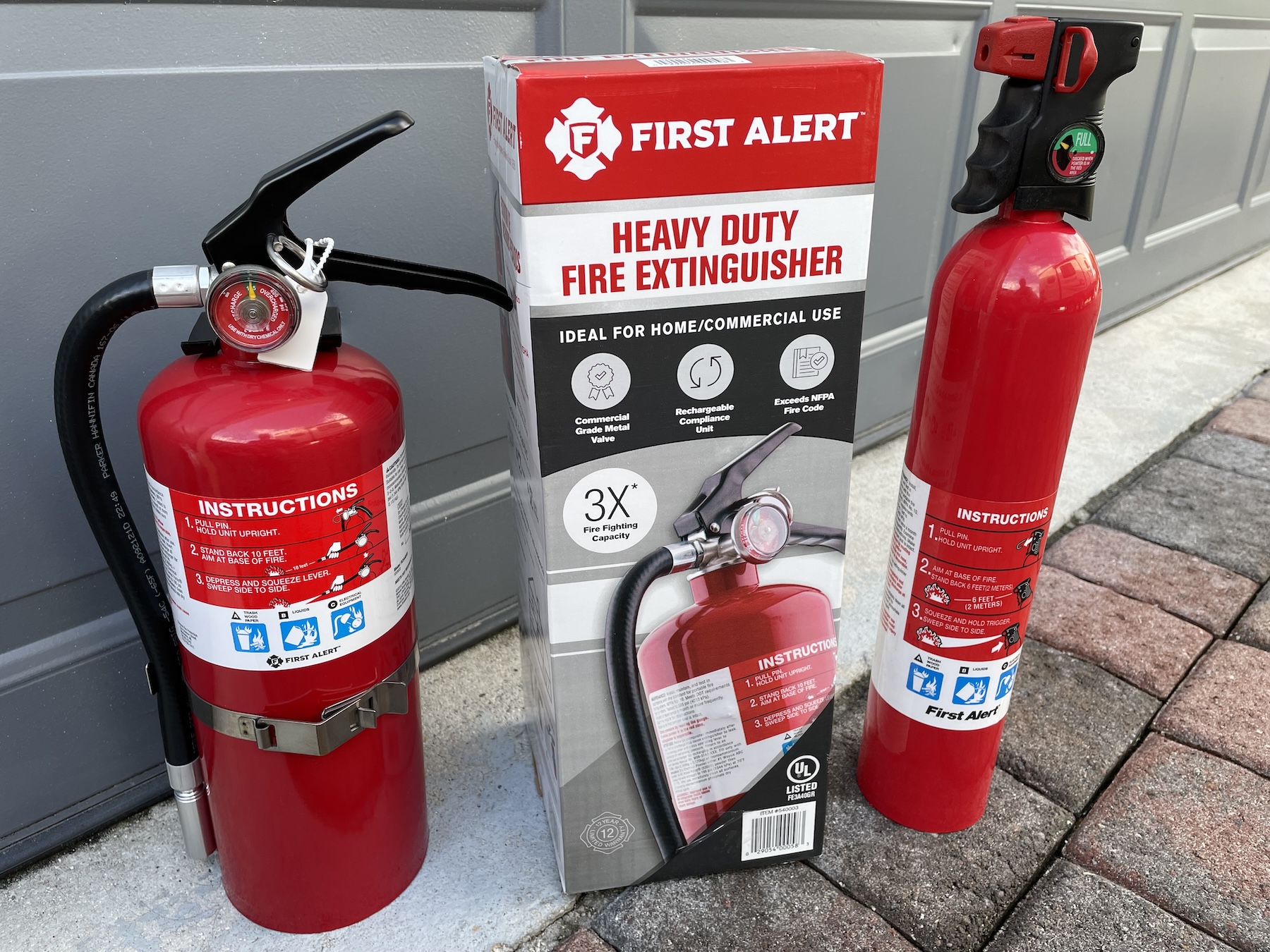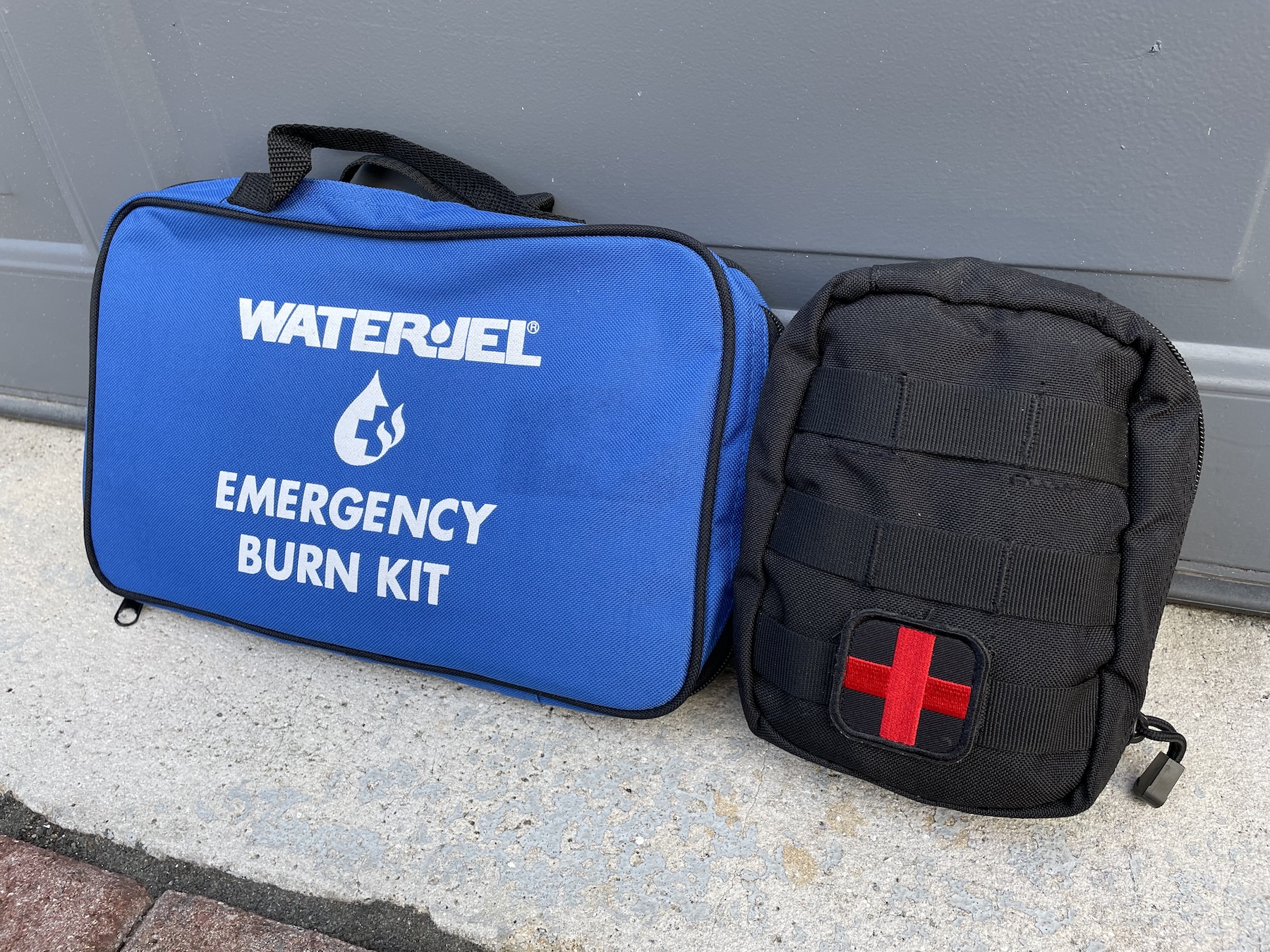
fesature (1)
Many people who have taken the time to plan/prepare for a crisis by securing the survival essentials – food, water, security & self-defense, first aid, etc., often fail to make even the most basic plans/preparations for the possibility of a home fire. A lot of these folks never take the time to consider what they would do if a fire broke out in their home.
This preparation becomes even more important during a crisis, since emergency services and first responders may be overwhelmed or unable to respond due to social unrest or lack of resources. When that moment arrives, you may be on your own.

These modern units offer 2-in-1 protection, are inexpensive, and some even feature a ten-year battery life.
This article looks at several ideas to help you plan, prepare, and even prevent a home fire. We also cover some tools, gear, and equipment that may one day help save your life.
Basic Fire Planning & Preparation
Suppose you have taken the time, effort, and expense to prepare for a natural or man-made disaster. In that case, your home is probably ground zero for many of those preparations. For example, if you decide to shelter in place during a crisis, it will most likely be in your home. Most of your supplies, gear, and defensive measures are stored in your home.

Maintain multiple high-lumen LED flashlights throughout the house. (Make sure all batteries are fully charged. Wall mount your flashlights to keep them accessible and easy to find.)
A rapid response may be the best way to help you escape or mitigate the damage during a fire. If you want to survive, you must have a plan and preparations. Additionally, you must act quickly and decisively. Surviving a house fire depends on having as much warning as possible, planning for early fire suppression or a speedy exit, and having the proper tools, equipment, and gear.

A solid axe or demolition tool can help you get through a stubborn door, window, or even a wall. Maintain one of these tools by each exit, fire extinguisher, and/or flashlight.
Specifics
Here are some tips and ideas to help you get started:
- Install Smoke & Carbon Monoxide (CO) Alarms – Install smoke and CO alarms on every level of your home, including bedrooms and other sleeping areas. Check your devices monthly to make sure they are fully functional.
- Know the way Out – Have an escape plan (with various points of exit) to get you and your family out quickly and safely. Review this plan with all family members and ensure they are familiar with the exits’ location and what they need to do to get out safely and quickly. Review and practice at least twice a year to ensure that all family members are familiar with the plan, that all escape routes are clear, uncluttered, and easy to follow, and that all exit doors and windows open easily.
- Evacuation Gear – If the path out is blocked, you may need additional help to clear the way. Having the proper evacuation tools, and knowing how to use them, may one day help save your life. A strong axe, crowbar, or heavy-duty demolition hammer will help you breach most doors, windows, or interior walls. When time is of the essence, robust and effective tools can make all the difference. Make sure to place these tools in strategic locations. LED flashlights can help with navigating the darkness. Stage flashlights throughout the house, especially near bedrooms and hallways.

Have at least two fire extinguishers on each level of your home. Wall mount them for easy access, and inspect them every few months.
- Fire Extinguishers – Strategically stage fire extinguishers on every level of your home for fast and easy access. (Heavy-duty, multi-purpose ABC-rated fire extinguishers are often recommended to fight most common home fires.) Ensure that everyone knows where the fire extinguishers are located and how to use them. While fire extinguishers can effectively suppress small fires, fighting a larger fire may require more than an average small unit can do. If the fire is already burning out of control, use your time to escape to safety and call for help.
- Prevention – Check your home for fire hazards and initiate corrective action. Take steps to reduce clutter, and the accumulation of potentially flammable materials. Store all flammable liquids safely in approved containers and well-ventilated areas – preferably away from your living areas.
- First Aid/Burn Kits – Maintain a fully stocked first-aid and burn kit. Suppose a family member is injured and help is not immediately available. In that case, you may need to administer first aid and treat any injuries to help avoid further complications.
Wrap-Up
You may one day be faced with a fire in your home. Proper planning and preparations will provide you and your family with the best possible chances for survival.
About The Author
Richard is a practicing attorney, an urban survival consultant, writer, firearms enthusiast, and freedom loving American patriot. He’s the author of Surviving Doomsday: A Guide for Surviving an Urban Disaster, and The Quick Start Guide for Urban Preparedness. Richard’s books are available at Amazon and other fine retailers. You can connect with Richard on Twitter (X) @SurvivingDoomsd
Sources:
DISCLAIMER
The materials provided are for illustration and/or informational purposes only. Any use of the information contained in this article shall be solely at the reader’s risk.















